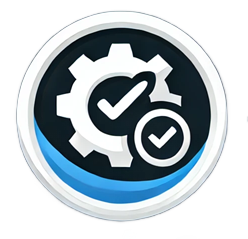
Testing a website is more than just clicking buttons and filling out forms. It’s about ensuring reliability, security, and performance across different environments.
While manual testing plays a crucial role, using the right tools saves time, improves accuracy, and uncovers issues that manual testing alone can’t.
Let’s explore the most essential QA tools that testers should be using for functional, performance, security, and accessibility testing—including their use cases, key features, and when to use them.
1️⃣ Functional Testing Tools – Ensuring the Website Works
Selenium & Playwright – Automating UI Tests
💡 Use Case:
- Automating browser interactions for UI testing and regression testing.
- Ensuring cross-browser compatibility before every release.
🚀 Why It’s Essential:
Manual testing is time-consuming and prone to human error. Selenium and Playwright allow testers to write scripts that simulate user behavior, enabling consistent testing across browsers and platforms.
🔑 Key Features:
- Selenium: Open-source automation for browser testing, supports Java, Python, C#.
- Playwright: Modern alternative with faster execution, cross-browser support, and better debugging tools.
✅ Best for: UI regression testing, cross-browser testing, automation testing.
🔗 Get It Here:
- Selenium: https://www.selenium.dev/
- Playwright: https://playwright.dev/
Postman – API Testing & Backend Validation
💡 Use Case:
- Testing REST & GraphQL APIs to verify request-response behavior.
- Automating API test cases to validate backend logic and integrations.
🚀 Why It’s Essential:
Even if the UI works perfectly, the backend needs to be validated separately. Postman allows testers to simulate API calls, test authentication, and ensure proper data exchange between front-end and back-end.
🔑 Key Features:
- Automate API testing with pre-built scripts.
- Supports OAuth, JWT, and other authentication methods.
- Mock API responses for testing frontend components.
✅ Best for: API validation, backend testing, integration testing.
🔗 Get It Here: https://www.postman.com/
2️⃣ Performance Testing Tools – Ensuring Speed & Stability
K6 & Gatling – Load Testing for High-Traffic Websites
💡 Use Case:
- Simulating thousands of users accessing a website simultaneously.
- Identifying slow server response times and bottlenecks before launch.
🚀 Why It’s Essential:
Performance failures can lead to lost revenue and poor user experience. Testing under heavy load prevents crashes during high-traffic events like Black Friday sales.
🔑 Key Features:
- K6: Uses JavaScript for load testing, integrates well with CI/CD pipelines.
- Gatling: Provides advanced stress testing and detailed performance analysis.
✅ Best for: Load testing, stress testing, CI/CD performance monitoring.
🔗 Get It Here:
- K6: https://k6.io/
- Gatling: https://gatling.io/
Lighthouse – Google’s Performance & SEO Tester
💡 Use Case:
- Analyzing page speed, SEO, and accessibility before launch.
- Optimizing Core Web Vitals to improve search ranking.
🚀 Why It’s Essential:
A slow website leads to higher bounce rates and lower conversions. Lighthouse helps identify heavy scripts, slow-loading elements, and performance issues.
🔑 Key Features:
- Analyzes First Contentful Paint (FCP), Time to Interactive (TTI).
- Detects unused JavaScript and CSS blocking page load.
- Provides actionable SEO and accessibility suggestions.
✅ Best for: Web performance testing, SEO optimization, Core Web Vitals improvements.
🔗 Get It Here: https://developers.google.com/web/tools/lighthouse
3️⃣ Security Testing Tools – Protecting User Data
Burp Suite – The Penetration Testing Powerhouse
💡 Use Case:
- Finding security vulnerabilities like XSS, SQL Injection, authentication flaws.
- Manipulating API requests to check for unauthorized access risks.
🚀 Why It’s Essential:
Even the best-designed website can have security loopholes. Burp Suite helps testers simulate attacks and find vulnerabilities before hackers do.
🔑 Key Features:
- Intercepts HTTP requests for manual security testing.
- Automated vulnerability scanner for OWASP Top 10 risks.
- Includes a repeater for testing different API inputs and security defenses.
✅ Best for: Security audits, penetration testing, API security testing.
🔗 Get It Here: https://portswigger.net/burp
OWASP ZAP – The Free Alternative to Burp Suite
💡 Use Case:
- Scanning web applications for security flaws before deployment.
- Finding unauthenticated page access, token leaks, and weak authentication.
🚀 Why It’s Essential:
Security testing should be accessible to all testers. OWASP ZAP is a free and powerful tool that automatically detects security issues without requiring deep technical skills.
🔑 Key Features:
- Automated passive & active security scans.
- Intercept and modify web traffic for testing authentication security.
- Detects SQL Injection, CSRF, and Cross-Site Scripting (XSS) vulnerabilities.
✅ Best for: Security testing, OWASP compliance, API security.
🔗 Get It Here: https://www.zaproxy.org/
4️⃣ Accessibility Testing Tools – Making Websites Inclusive
axe DevTools – Ensuring Accessibility Compliance
💡 Use Case:
- Detecting WCAG compliance violations in web applications.
- Testing keyboard navigation, color contrast, and screen reader compatibility.
🚀 Why It’s Essential:
Accessibility isn’t just about compliance—it’s about inclusivity. Axe DevTools helps developers fix accessibility issues before launch, preventing lawsuits and improving UX.
🔑 Key Features:
- Detects color contrast, missing ARIA labels, and keyboard traps.
- Provides fix recommendations for WCAG issues.
✅ Best for: Accessibility audits, WCAG compliance testing.
🔗 Get It Here: https://www.deque.com/axe/devtools/
5️⃣ Cross-Browser & Cross-Device Testing
BrowserStack & LambdaTest – Ensuring Compatibility
💡 Use Case:
- Testing websites on real browsers, devices, and OS versions.
- Ensuring web applications work on both desktop and mobile.
🚀 Why It’s Essential:
A website might work on Chrome but fail on Safari. Testing across real devices ensures a seamless user experience across different environments.
🔑 Key Features:
- Live testing on multiple browsers and mobile devices.
- Screenshots & video recording for reporting UI issues.
✅ Best for: Compatibility testing, mobile testing, UI validation.
🔗 Get It Here:
- BrowserStack: https://www.browserstack.com/
- LambdaTest: https://www.lambdatest.com/
Conclusion: Choosing the Right Tools for Your Needs
A strong QA workflow includes:
✔ Functional Testing: Selenium, Playwright, Postman
✔ Performance Testing: K6, Gatling, Lighthouse
✔ Security Testing: Burp Suite, OWASP ZAP
✔ Accessibility Testing: axe DevTools
✔ Cross-Browser Testing: BrowserStack, LambdaTest
💡 Want more QA tools? Check out Best QA Tools & Browser Extensions for even more insights.
